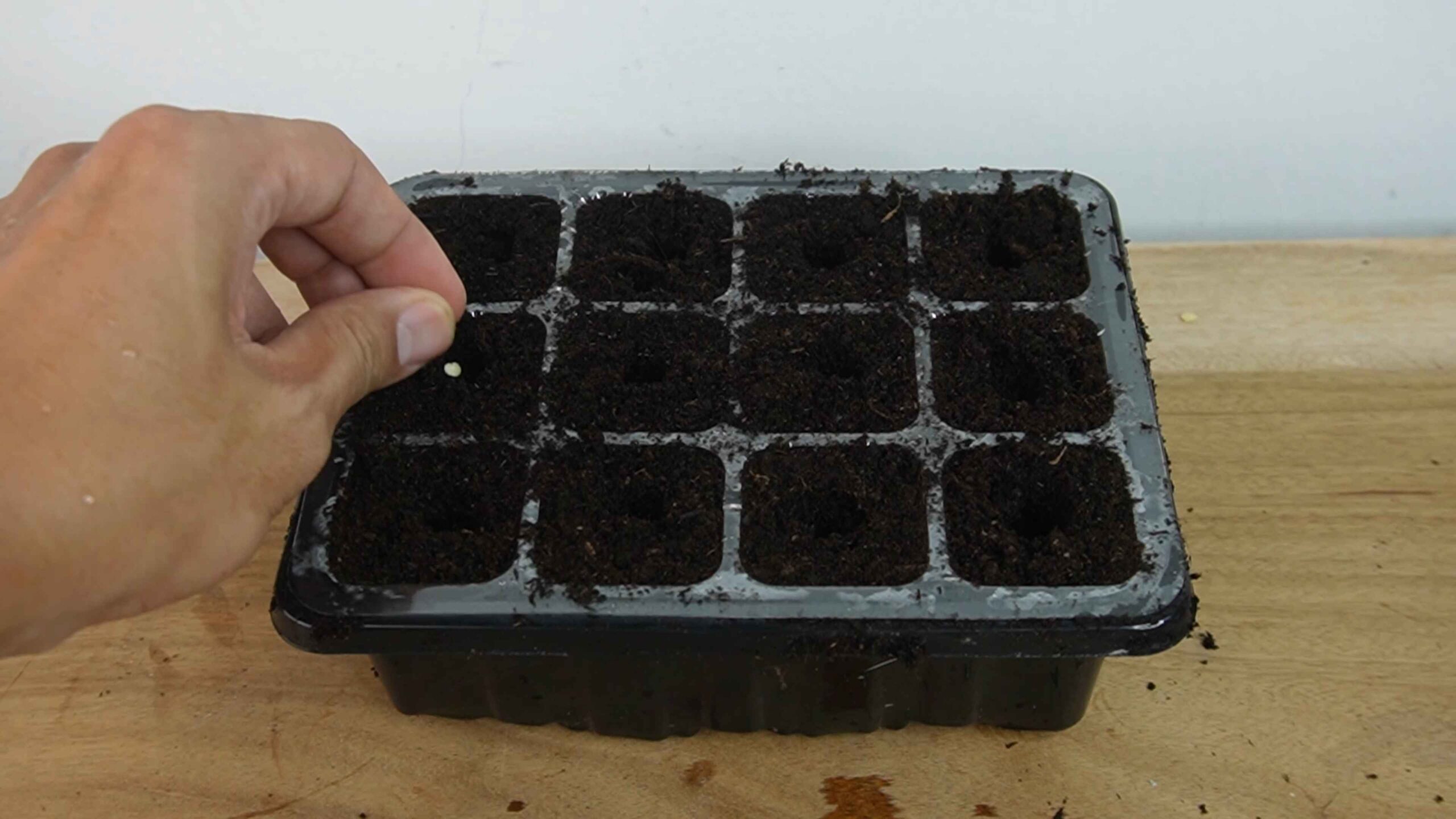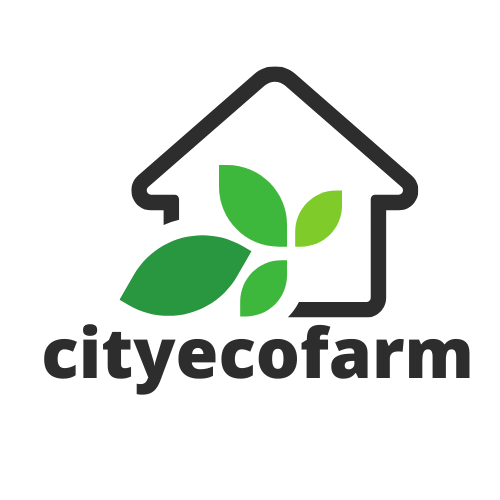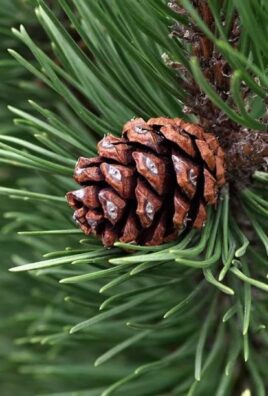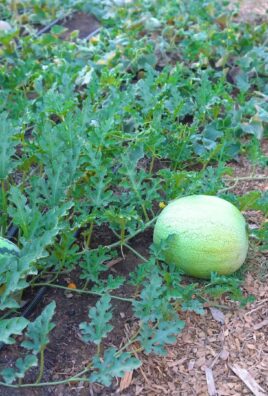Grow Bell Peppers from Seed and unlock a world of vibrant colors and delicious flavors right in your own backyard! Have you ever imagined biting into a crisp, juicy bell pepper that you nurtured from a tiny seed? It’s an incredibly rewarding experience, and trust me, it’s easier than you think! For centuries, bell peppers have been a staple in cuisines around the globe, adding a touch of sweetness and a burst of nutrients to countless dishes. From the stuffed peppers of Mediterranean cultures to the vibrant salsas of Latin America, this versatile vegetable has a rich and flavorful history.
But why should you bother learning to grow bell peppers from seed yourself? Well, for starters, you’ll have access to a wider variety of pepper types than you’d typically find at the grocery store. Plus, you’ll know exactly what went into growing them – no mystery chemicals or questionable practices! In today’s world, where we’re all striving to be more self-sufficient and conscious about what we consume, mastering this simple skill is a game-changer. Imagine the satisfaction of serving a meal featuring bell peppers you grew with your own two hands. Let’s dive in and discover the secrets to successfully growing these colorful gems from seed to harvest!

Growing Bell Peppers from Seed: A Comprehensive DIY Guide
Hey there, fellow gardening enthusiasts! I’m so excited to share my tried-and-true method for growing bell peppers from seed. It’s a rewarding process that allows you to cultivate a wider variety of peppers than you might find at your local nursery, and honestly, there’s nothing quite like the taste of a pepper you’ve nurtured from a tiny seed. Let’s dive in!
Why Start Bell Peppers from Seed?
Before we get into the nitty-gritty, let’s quickly touch on why starting from seed is a great option:
* Variety: You’ll have access to a much broader selection of bell pepper varieties, including heirloom and specialty types.
* Cost-Effective: It’s generally cheaper to buy a packet of seeds than to purchase established pepper plants.
* Control: You have complete control over the growing environment from the very beginning, ensuring healthy and robust plants.
* Satisfaction: There’s a unique sense of accomplishment that comes with watching a tiny seed sprout and grow into a productive plant.
Materials You’ll Need
Okay, let’s gather our supplies. Here’s what you’ll need to successfully start your bell pepper seeds:
* Bell Pepper Seeds: Choose your favorite varieties! I recommend starting with a few different types to see which ones thrive in your garden.
* Seed Starting Trays or Pots: These should have drainage holes to prevent waterlogging. I personally prefer seed starting trays with individual cells.
* Seed Starting Mix: This is a lightweight, sterile mix specifically formulated for starting seeds. Don’t use garden soil, as it can be too heavy and may contain pathogens.
* Heat Mat (Optional but Recommended): Bell peppers germinate best in warm soil (75-85°F). A heat mat will significantly improve your germination rate.
* Grow Lights (Optional but Recommended): Once your seedlings emerge, they’ll need plenty of light to prevent them from becoming leggy. Grow lights provide consistent and adequate light, especially if you’re starting seeds indoors during the winter.
* Spray Bottle: For gently watering your seeds and seedlings.
* Small Fan (Optional): Gentle air circulation helps prevent fungal diseases.
* Labels and a Permanent Marker: To keep track of your different pepper varieties.
* Thermometer: To monitor the soil temperature.
* Humidity Dome or Plastic Wrap: To maintain humidity during germination.
Phase 1: Sowing the Seeds
This is where the magic begins! We’re going to create the perfect environment for our bell pepper seeds to sprout.
1. Prepare Your Seed Starting Trays/Pots: Fill your seed starting trays or pots with seed starting mix. Gently tap the trays to settle the mix, but don’t pack it down too tightly.
2. Moisten the Seed Starting Mix: Thoroughly moisten the seed starting mix with water. You want it to be damp, but not soggy. I find it easiest to do this before filling the trays.
3. Sow the Seeds: Make a small indentation (about 1/4 inch deep) in the center of each cell or pot. Place 2-3 seeds in each indentation. This increases your chances of at least one seed germinating.
4. Cover the Seeds: Gently cover the seeds with a thin layer of seed starting mix.
5. Water Gently: Use a spray bottle to gently water the surface of the soil. Avoid using a strong stream of water, as this can dislodge the seeds.
6. Label Your Trays/Pots: Use labels and a permanent marker to clearly identify each pepper variety. Trust me, you’ll thank yourself later!
7. Create a Humid Environment: Cover the seed starting trays with a humidity dome or plastic wrap. This will help maintain a consistent level of humidity, which is crucial for germination.
8. Place on a Heat Mat (Optional but Recommended): Place the seed starting trays on a heat mat set to 75-85°F. Monitor the soil temperature with a thermometer to ensure it stays within the optimal range.
9. Find a Warm Location: If you’re not using a heat mat, find a warm location in your home where the temperature is consistently around 75-85°F.
Phase 2: Germination and Early Seedling Care
Now comes the waiting game! Bell peppers can be a bit slow to germinate, so be patient.
1. Monitor Moisture Levels: Check the moisture levels of the seed starting mix daily. Keep the mix consistently moist, but not soggy. Use a spray bottle to gently water as needed.
2. Maintain Warmth: Continue to maintain a warm soil temperature (75-85°F) using a heat mat or a warm location.
3. Ventilate (If Using a Humidity Dome): Once you see signs of germination (usually within 7-14 days, but sometimes longer), begin to ventilate the humidity dome or plastic wrap for a few hours each day. This will help prevent fungal diseases.
4. Remove Humidity Dome/Plastic Wrap: Once most of the seeds have germinated, remove the humidity dome or plastic wrap completely.
5. Provide Adequate Light: As soon as the seedlings emerge, they’ll need plenty of light. Place them under grow lights or in a very sunny window. If using grow lights, position them a few inches above the seedlings and adjust the height as the seedlings grow. I usually keep my grow lights on for 14-16 hours a day.
6. Thin Seedlings (If Necessary): If you planted multiple seeds in each cell or pot, thin the seedlings to one per cell once they have their first set of true leaves (the leaves that appear after the initial seed leaves, or cotyledons). Choose the strongest, healthiest-looking seedling and snip off the others at the soil line with scissors. Don’t try to pull them out, as this can damage the roots of the remaining seedling.
7. Provide Gentle Air Circulation: Use a small fan to provide gentle air circulation around the seedlings. This will help prevent fungal diseases and strengthen the stems.
8. Water Carefully: Continue to water the seedlings carefully, allowing the top inch of soil to dry out slightly between waterings. Avoid overwatering, as this can lead to root rot.
Phase 3: Growing and Hardening Off
As your seedlings grow, they’ll need more space and nutrients. We’ll also need to prepare them for the transition to the outdoors.
1. Transplant to Larger Pots (If Necessary): If your seedlings start to outgrow their seed starting trays or pots, transplant them to larger containers (e.g., 4-inch pots). Use a good quality potting mix.
2. Fertilize Regularly: Once the seedlings have their second set of true leaves, begin to fertilize them regularly with a diluted liquid fertilizer. I like to use a balanced fertilizer (e.g., 20-20-20) diluted to half strength. Follow the instructions on the fertilizer label.
3. Harden Off the Seedlings: Before transplanting your bell pepper seedlings outdoors, you’ll need to harden them off. This process gradually acclimates them to the outdoor environment, reducing the risk of shock. Start by placing the seedlings outdoors in a sheltered location for a few hours each day, gradually increasing the amount of time they spend outdoors over a period of 1-2 weeks. Protect them from direct sunlight and strong winds during the hardening-off process.
4. Monitor for Pests and Diseases: Keep an eye out for pests and diseases. If you notice any problems, address them promptly.
Phase 4: Transplanting Outdoors
The final step! It’s time to move your bell pepper plants to their permanent home in the garden.
1. Choose a Sunny Location: Bell peppers need at least 6-8 hours of sunlight per day. Choose a location in your garden that receives plenty of sun.
2. Prepare the Soil: Bell peppers prefer well-drained, fertile soil. Amend the soil with compost or other organic matter to improve its drainage and fertility.
3. Transplant the Seedlings: Dig a hole that is slightly larger than the root ball of the seedling. Gently remove the seedling from its pot and place it in the hole. Backfill the hole with soil and gently firm the soil around the base of the plant.
4. Water Thoroughly: Water the newly transplanted seedlings thoroughly.
5. Mulch (Optional): Apply a layer of mulch around the base of the plants to help retain moisture, suppress weeds, and regulate soil temperature.
6. Provide Support (Optional): As the bell pepper plants grow, they may need support to prevent them from falling over. You can use stakes or cages to provide support.
7. Water Regularly: Water the bell pepper plants regularly, especially during dry periods.

Conclusion
So, there you have it! Growing bell peppers from seed might seem daunting at first, but with a little patience and these simple steps, you can cultivate a thriving pepper patch right in your own home or garden. The satisfaction of harvesting your own vibrant, crisp bell peppers, knowing you nurtured them from tiny seeds, is truly unparalleled. It’s a rewarding experience that connects you to the food you eat and allows you to control the quality and freshness of your produce.
This DIY trick isn’t just about saving money (though that’s certainly a perk!). It’s about embracing a sustainable lifestyle, reducing your reliance on store-bought produce, and enjoying the unique flavors of homegrown vegetables. Plus, you have complete control over the varieties you grow. Tired of the standard green bell pepper? Explore the rainbow! Try growing vibrant red, sunny yellow, deep purple, or even chocolate bell peppers. Experiment with different heirloom varieties known for their exceptional flavor and unique characteristics.
Consider starting your seeds indoors even if you plan to transplant them outdoors later. This gives them a head start, especially in regions with shorter growing seasons. You can also experiment with different soil mixes to find what works best for your seeds. Some gardeners swear by adding a touch of compost or worm castings to their seed starting mix for an extra boost of nutrients.
Don’t be afraid to get creative with your containers! While seed starting trays are convenient, you can also repurpose egg cartons, yogurt cups, or even toilet paper rolls. Just make sure your chosen container has drainage holes to prevent waterlogging.
And remember, growing bell peppers from seed is a learning process. Don’t be discouraged if you encounter challenges along the way. Every gardener faces setbacks, but the key is to learn from your mistakes and keep trying. The more you experiment and observe, the better you’ll become at nurturing your pepper plants.
We wholeheartedly encourage you to give this DIY trick a try. Imagine the delicious meals you can create with your homegrown bell peppers – from stuffed peppers and fajitas to vibrant salads and flavorful sauces. The possibilities are endless!
Once you’ve embarked on your bell pepper growing journey, we’d love to hear about your experience. Share your tips, successes, and challenges in the comments below. Let’s create a community of bell pepper enthusiasts and learn from each other. Did you try a unique variety? Did you discover a secret to faster germination? Did you encounter any unexpected pests or diseases? Your insights could be invaluable to other aspiring gardeners. So, grab your seeds, get your hands dirty, and prepare to enjoy the fruits (or rather, vegetables) of your labor! Happy gardening!
Frequently Asked Questions (FAQ)
How long does it take for bell pepper seeds to germinate?
Germination time for bell pepper seeds can vary depending on several factors, including temperature, moisture levels, and the freshness of the seeds. Generally, you can expect to see sprouts emerge within 7 to 21 days. Maintaining a consistent soil temperature of around 80-85°F (27-29°C) is crucial for optimal germination. Using a heat mat can significantly speed up the process. Ensure the soil remains consistently moist but not waterlogged. Older seeds may take longer to germinate or may not germinate at all, so it’s always best to use fresh seeds whenever possible.
What kind of soil is best for starting bell pepper seeds?
The ideal soil for starting bell pepper seeds is a light, well-draining seed starting mix. Avoid using garden soil, as it can be too heavy and may contain pathogens that can harm young seedlings. A good seed starting mix typically consists of peat moss, vermiculite, and perlite. These ingredients provide good drainage, aeration, and moisture retention. You can also make your own seed starting mix by combining equal parts peat moss, vermiculite, and compost. Adding a small amount of compost can provide essential nutrients to the seedlings.
How often should I water my bell pepper seedlings?
Watering bell pepper seedlings correctly is essential for their healthy growth. The goal is to keep the soil consistently moist but not waterlogged. Overwatering can lead to root rot, while underwatering can cause the seedlings to dry out and die. Check the soil moisture daily by gently pressing your finger into the soil. If the top inch of soil feels dry, it’s time to water. Water gently from the bottom to avoid disturbing the delicate seedlings. You can do this by placing the seed starting tray in a shallow dish of water and allowing the soil to absorb the water from the bottom. Remove the tray from the water once the surface of the soil is moist.
When should I transplant my bell pepper seedlings?
Transplant your bell pepper seedlings when they have developed their first set of true leaves (the leaves that appear after the initial seed leaves, or cotyledons) and are about 2-3 inches tall. Before transplanting, harden off the seedlings by gradually exposing them to outdoor conditions for a week or two. Start by placing them in a sheltered location for a few hours each day, gradually increasing the amount of time they spend outdoors. This will help them acclimate to the sun, wind, and temperature changes. When transplanting, choose a sunny location with well-drained soil. Space the seedlings about 18-24 inches apart.
What are some common problems when growing bell peppers from seed and how can I fix them?
Several common problems can arise when growing bell peppers from seed. One common issue is damping-off, a fungal disease that causes seedlings to rot at the soil line. To prevent damping-off, use a sterile seed starting mix, avoid overwatering, and ensure good air circulation. Another problem is leggy seedlings, which are tall and spindly due to insufficient light. To fix this, provide more light by placing the seedlings under a grow light or in a sunnier location. Pests such as aphids and spider mites can also attack bell pepper seedlings. Inspect your seedlings regularly and treat any infestations promptly with insecticidal soap or neem oil. Finally, nutrient deficiencies can cause stunted growth or yellowing leaves. Fertilize your seedlings with a balanced liquid fertilizer diluted to half strength.
Can I grow bell peppers from seed indoors year-round?
Yes, you can grow bell peppers from seed indoors year-round, provided you have the right conditions. Bell peppers need at least 6-8 hours of sunlight per day, so you’ll likely need to supplement with grow lights, especially during the winter months. Choose a grow light that provides a full spectrum of light. You’ll also need to provide adequate ventilation and maintain a consistent temperature of around 70-80°F (21-27°C). Pollinating the flowers can be a challenge indoors, as there are no bees or other insects to do the job. You can hand-pollinate the flowers by gently shaking the plants or using a small paintbrush to transfer pollen from one flower to another.
What are some good bell pepper varieties to grow from seed?
There are many excellent bell pepper varieties to choose from when growing from seed. Some popular choices include ‘California Wonder’ (a classic green bell pepper), ‘Yolo Wonder’ (another reliable green bell pepper), ‘Golden Bell’ (a sweet yellow bell pepper), ‘Purple Beauty’ (a beautiful purple bell pepper), and ‘Chocolate Beauty’ (a unique chocolate-colored bell pepper). For those who prefer a bit of heat, ‘Jalapeño’ and ‘Anaheim’ are also great options to start from seed. Consider your local climate and growing conditions when selecting varieties. Some varieties are more heat-tolerant or disease-resistant than others.
How do I know when my bell peppers are ready to harvest?
Bell peppers are typically ready to harvest when they have reached their mature size and color. The exact size and color will vary depending on the variety. Green bell peppers can be harvested when they are firm and have reached a good size, even if they haven’t fully ripened. However, they will be sweeter and more flavorful if you allow them to ripen to their mature color (red, yellow, orange, or purple). To harvest, use a sharp knife or pruning shears to cut the pepper from the plant, leaving a short stem attached. Handle the peppers carefully to avoid bruising them.





Leave a Comment